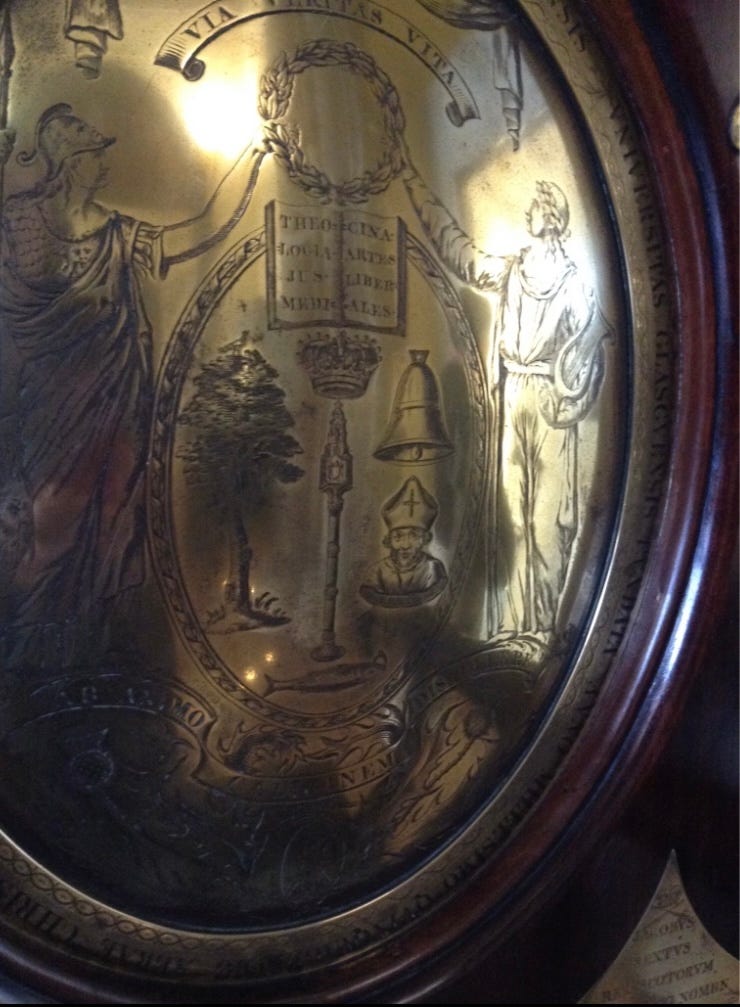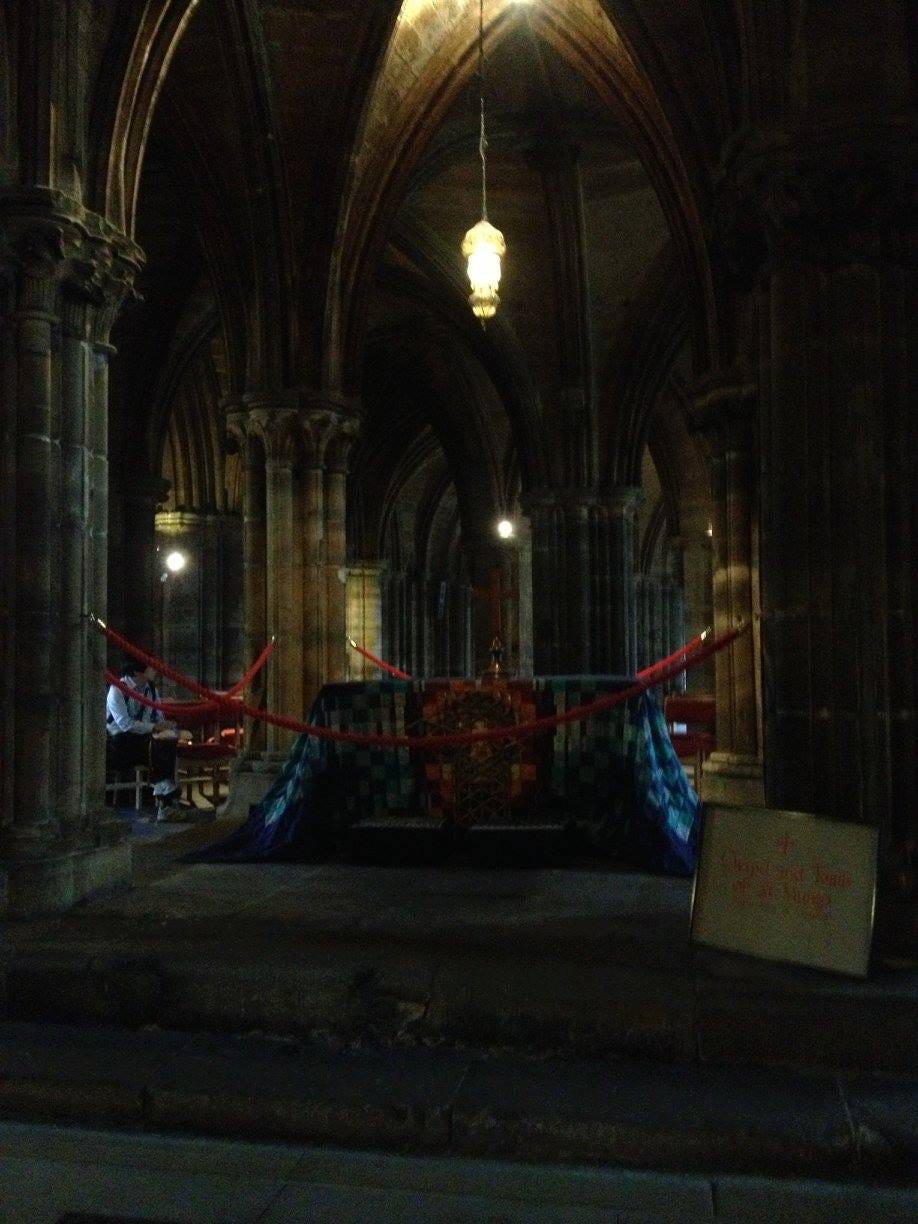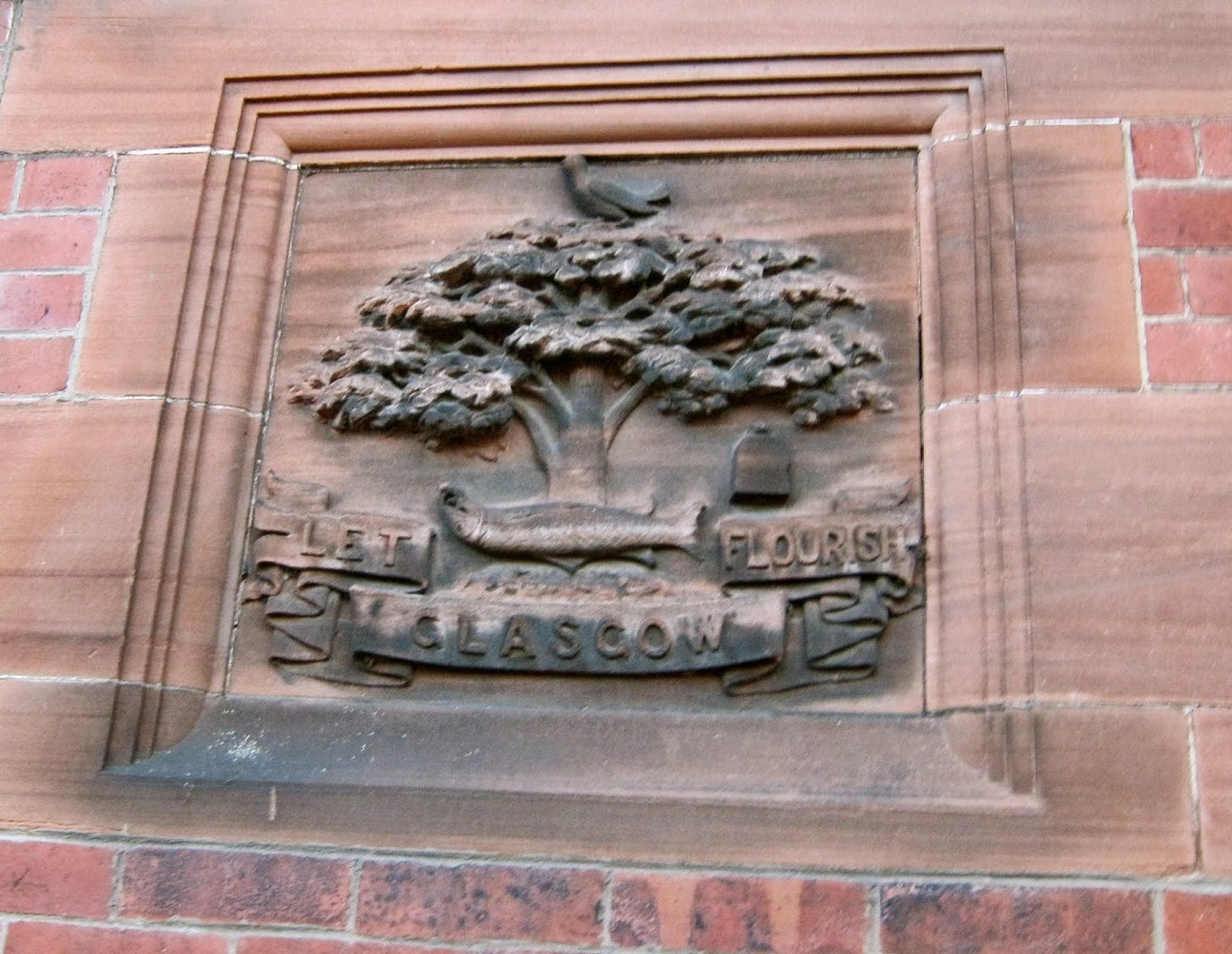I meant to write a history of St Kentigern (or Mungo, as he’s better known) and have it posted on his feast day, which is January 13th, but for some reason, I wasn’t able to load my editing page, and days passed and I still wasn’t able to work on this newsletter to send out.
But I’m kind of glad that it didn’t work out on the 13th. I wasn’t really in the mood to write about St. Mungo on that day, everything I was writing felt forced. And despite the fact that this is a post about a 6th century holy man, it is also very personal.
I first ran across St. Mungo in a mystery series my sister Heather and I read, that takes place in Glasgow in the 15th century. When I moved to Glasgow, I knew that the crest both of the city and of the university included his miracles. A well known rhyme that is found in Glasgow reads,
Here is the bird that never flew
Here is the tree that never grew
Here is the bell that never rang
Here is the fish that never swam
What I wasn’t expecting was seeing different iterations of that crest all over the city dating (at least what I’m aware of) from the 1600s on. The more I learned about St. Mungo and his famous miracles, the more I was enchanted with him. I’ve thought about him and written about him quite a lot since, in poems and stories. “Let Glasgow Flourish” is the motto of the city, taken from what Mungo himself said: “Let Glasgow flourish by the preaching of the word.” It feels to me that Mungo still watches over the city and loves it.
There are two known hagiographies (a biography of a saint) of Kentigern, but unlike St Columba (his more famous contemporary, whose hagiography was written about a hundred years after his death) neither of them was written until the 12th century, five hundred years after his death. Both these hagiographies refer to a small book where they gathered some material, as well as the ideas and stories that 12th century Glaswegians believed about their patron saint, but sadly, nothing was written about him within living memory. The first is only a fragment, written for Bishop Herbert, and the other was written by a man named Jocelyn of Furness, for the Bishop Jocelyn in Glasgow. There are fragments, poems and other mentions of Kentigern that piece together an idea of his historical life, and I have poured over articles and information about this in order to try to get an idea of it. But myth and reality are heavily mixed up in the story of Mungo, and that’s alright. Perhaps none of the miracles are true, but they are such beautiful and powerful stories, regardless.
The story of Saint Mungo begins with his mother, who had converted to Christianity, and longed to be like the virgin Mary. Her father, King Leudonus who lived in the Lothian area, wanted her to marry a pagan prince, but she was not interested. Some claim that this man was Owain map Urien, who was a real man, and who later was incorporated into Arthurian legend. Thaney, Mungo’s mother, refused. She did not want to marry.
In the fragment hagiography, there is a lot of detail about Mungo’s conception, which Jocelyn glosses over. Owain, or whoever the pagan prince was, dressed himself as a woman and raped Thaney. When she became pregnant, her father threw her out of a window and down the steep slope of their hillfort (some claim that they lived at Traprain Law, which is near Edinburgh, though there is no evidence to prove this). She survived the fall, and went in a coracle across the Firth of Forth, landing in Culross, where Saint Serf took her in and helped raise her son, Kentigern. It was Serf who first called him Mungo, which means ‘my dear one’.

Many of his miracles occurred when he was young, under the tutelage of Serf.
The Bird: Saint Serf had a pet robin which Mungo’s school fellows kill. He brings it back to life.
The Tree: this also takes place while Mungo was learning with Serf. The jealous boys put out the fires that Mungo is supposed to be tending in the night. Mungo gets a fresh hazel branch and sets it on fire, and it burns the rest of the night.
The Bell: Mungo is said to have travelled to Rome, during a period of time when he was exiled from Glasgow. There he was gifted this bell by the pope. It was still in existence in the 16th century and was used to call people to worship. At some point it disappeared, and a replacement was made in 1641.
The Fish: This is my favorite of the miracle stories. King Rydderch Hael restored Mungo to his position in Glasgow. His wife, Queen Languoreth, was having an affair with one of the king’s men, and she gave him a ring of hers. The king discovered the man asleep and took the ring, throwing it into the River Clyde. He then demanded the ring from his wife, threatening to kill her if she could not produce it. She turned to Mungo for help. He instructed that a fish should be caught in the river, and the first fish that is caught is cut open, and inside was the ring, which was restored to the queen.
There is also the story of how the location of Mungo’s church in Glasgow is chosen. After leaving Serf, Mungo goes to the house of Fergus, an old man who then dies. Mungo places him on a cart and yokes two wild bulls to the cart, declaring that wherever they stop is where the body of Fergus will rest, and where Mungo will establish a church. The bulls stop in what is now Glasgow, beside the Molendinar burn which used to flow through Glasgow and is now mostly underground. Mungo was also buried here, and later they would build the Glasgow Cathedral in this same spot.
Glasgow didn’t have a large religious center for many years. In fact, the nearby Govan was much grander for centuries, the remains of several unique and beautiful carved stones and hogback stones from the 9th and 10th centuries attesting to this. It was when David I of Scotland became king in 1124 that he wanted the religious power to shift to Glasgow, and he established a bishopric in Glasgow. The first cathedral was dedicated in 1136 (it was later rebuilt, after severe damage, and dedicated in 1197). This also explains that, while there were legends and beliefs in Glasgow about St. Mungo, his hagiographies were not commissioned until the 12th century.
I’m not sure at what point Thaney, Mungo’s mother, also became a saint, and as I wrote in a previous newsletter, she had her own church and holy well. In fact, the Trongate, one of the oldest streets in Glasgow, it was first known as St Thenew’s Gait, and became Trongate only from the beginning of the 1500s on.
It was wonderful to be able to live in Glasgow for four years, and get a feeling for this early saint. Every Christmas Eve I would make sure to visit the cathedral (I’d go throughout the year too). Mungo is a powerful presence still. The love that Mungo has for the city, and the love that, past and present, Glaswegians have for him is still alive, and even though I no longer live there, that love is in me too.
All the photos are mine, except the last one, which I found on an excellent blog post which also details the life of St Mungo and his mother: Glasgow Punter.









Such a beautiful tribute to St Mungo!!!
I am saving this one to make sure I can return to it again and again. Sweetly powerful, and filled with detail as well as feelings. A very unique and sacred history, and one can feel that just reading your words. Thank you!